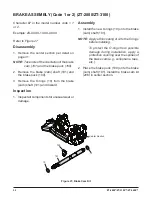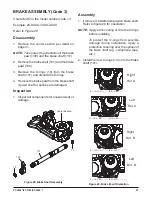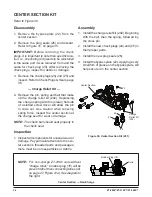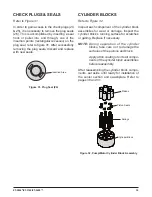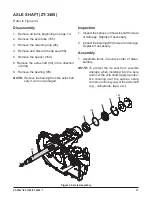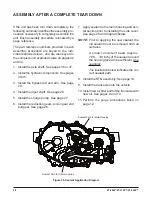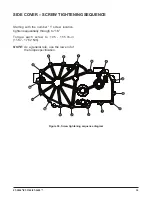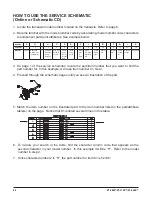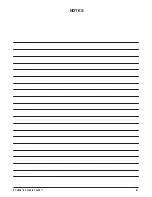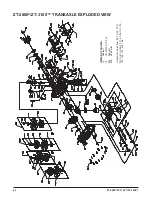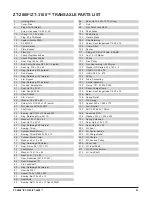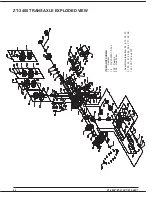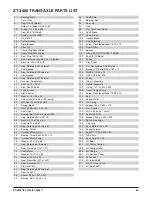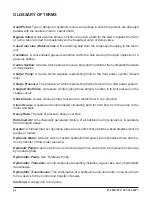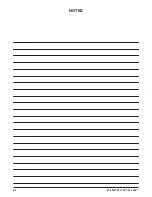
46
ZT-2800
®
/ZT-3100™/ZT-3400™
Axial Piston:
Type of design for hydraulic motors and pumps in which the pistons are arranged
parallel with the spindle (input or output shaft).
Bypass Valve:
A valve whose primary function is to open a path for the fluid to bypass the motor
or pump. Also referred to occasionally as the freewheel valve or dump valve.
Case Drain Line (Return Line):
A line returning fluid from the component housing to the reser
-
voir.
Cavitation:
A concentrated gaseous condition within the fluid causing the rapid implosion of a
gaseous bubble.
Center Section:
A device which acts as the valve body and manifold of the hydrostatic transaxle
or transmission.
Charge Pump:
A device which supplies replenishing fluid to the fluid power system (closed
loop).
Charge Pressure:
The pressure at which replenishing fluid is forced into a fluid power system.
Charge Relief Valve:
A pressure control valve whose primary function is to limit pressure in the
charge circuit.
Check Valve:
A valve whose primary function is to restrict flow in one direction.
Closed Loop:
A sealed and uninterrupted circulating path for fluid flow from the pump to the
motor and back.
Decay Rate:
The ratio of pressure decay over time.
Entrained Air:
A mechanically generated mixture of air bubbles having a tendency to separate
from the liquid phase.
Gerotor:
A formed rotor set operating about an eccentric that provides a fixed displacement for
pumps or motors.
Hydraulic Motor:
A device which converts hydraulic fluid power into mechanical force and mo
-
tion by transfer of flow under pressure.
Hydraulic Pump:
A device which converts mechanical force and motion into hydraulic fluid power
by producing flow.
Hydrostatic Pump:
See “Hydraulic Pump.”
Hydrostatic Transaxle:
A multi component assembly including a gear case and a hydrostatic
transmission.
Hydrostatic Transmission:
The combination of a hydraulic pump and motor in one housing to
form a device for the control and transfer of power.
Inlet Line:
A supply line to the pump.
gLOssarY Of TerMs

